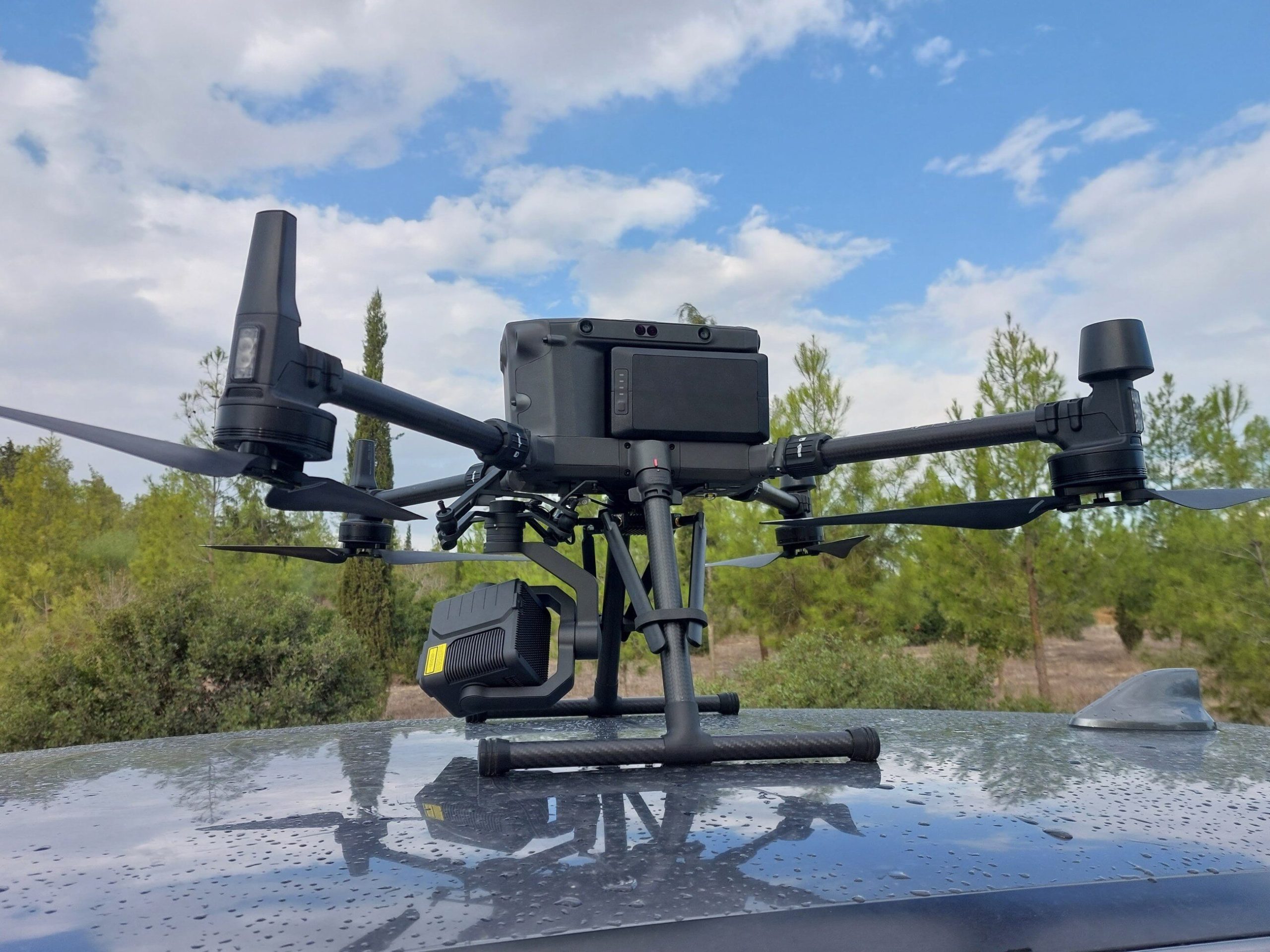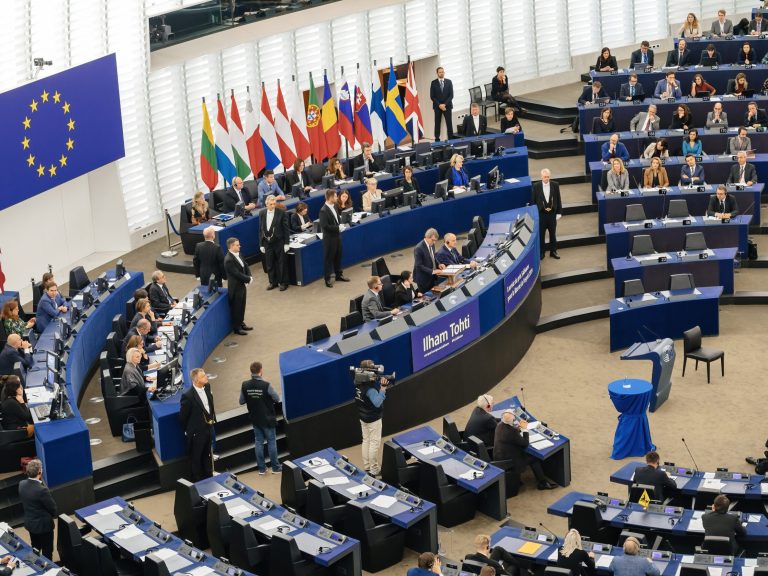This is how AI detects fire. “Drones will extinguish fires”

The new technology will help firefighters detect fires with a 99.9% rate. effectiveness. The Pyro Sense system combines AI, reconnaissance drones and sensors communicating over the 5G network. This is just the beginning, because soon drones will be able to extinguish fires themselves.
A forest fire is a fight against time, where lives are often at stake. When every minute counts, early detection can be the difference between a minor incident and a major tragedy.
Firefighters will soon gain an excellent tool that will significantly facilitate fire detection even in extremely inaccessible places. The innovative Pyro Sense fire detection system presented in October uses the latest technologies to protect particularly valuable forests in the Mediterranean countries.
George Delaportas, co-founder and CEO of the PROBOTEK company responsible for the system, tells us about the details of the project being implemented in Cyprus and how AI learns to understand fire.
Krzysztof Sobiepan, Wprost.pl: How important is it to detect starting a fire as quickly as possible? Is it true that you fight for every minute here?
George Delaportas, PROBOTEK: Yes it’s true. In the European Union, we even have a rule called “golden 15 minutes”. This is an index that informs about the effects of a forest fire depending on the time of its detection. Just fifteen minutes after the first spark, the element becomes uncontrollable. Especially in warm and dry areas such as, among others, in Greece or Cyprus.
This means that we have to detect a fire much faster than 15 minutes. You should aim for detection from one minute to a maximum of three minutes. Then firefighters still have adequate time to react and the entire fire extinguishing operation can be completed within the already mentioned golden quarter of an hour.
And this is what the PROBOTEK detection system offers?
This is exactly what we had in mind when developing our solution. Pyro Sense’s goal was to achieve a detection rate of less than three minutes, which is faster than traditional methods.
To patrol forest areas, we use drones that are equipped with advanced cameras and can immediately detect signs of fire. It may be the outline of smoke against the background of tree crowns or the fire itself, even in a single frame. The mere suspicion of detecting fire triggers the entire process of confirming the incident and notifying the appropriate services.
Everything is done to minimize false alarms, but at the same time remain vigilant and act very quickly.
Is drone observation sufficient to protect vast forest areas? Devices cannot be everywhere at the same time.
Drones are an important element of the system, but their operation is a bit more complicated. We also use numerous sensors installed in key parts of the forest to detect fire. We place them on the trees themselves, but also at the level of the ground and forest undergrowth.
We also have static, optical and thermal cameras placed in locations with the highest visibility. We also use satellite monitoring, specialized in tracking fire and changes in climatic conditions. Drones are like mobile forest guards. They can therefore provide an additional pair of “eyes” or verify ambiguous situations up close.
However, drones have their limitations, they tend not to fly in bad conditions, for example during heavy rain. Of course, such circumstances also significantly reduce the risk of fire outbreak.
Suppose someone has just thrown away a cigarette butt in the forest. What are the next steps for the Pyro Sense system?
The first element will usually be sensors. The spark and the first flames are detected immediately. This happens thanks to sensors, of which we have several types.
Some of them detect carbon dioxide or carbon monoxide, because their sudden increase is a fairly clear sign of combustion. Others detect an increase in temperature. We also have specialized sensors that respond to other signs of fire. In our tests, the first detection of anomalies by the sensor occurs even a second after the dusting, up to a maximum of 10 seconds.
Communication between the sensors and the main system takes place via the 5G network. A high-speed connection allows you to track changes in conditions from second to second, which can help, among others: when determining the direction of fire spread.
This first detection requires confirmation, so the system headquarters modifies the patrol route of the nearest drone. The device precisely heads to the point marked with GPS coordinates. Even from a distance, cameras are pointed at a suspicious place.
What happens next?
Once the drone arrives, our artificial intelligence system comes into action. AI trained to recognize signs of fire and smoke in videos verifies the live footage. If it’s a false alarm, the action ends.
However, if there is actually a fire, the system automatically notifies the fire services. This may be an alarm SMS message, e-mails to appropriate mailboxes or a phone call with an automated voice message. Of course, we also provide the exact location of the fire.
However, the drone does not end its service. Once firefighters are on site, the system can send additional live information to respondents. They concern the current state of the fire, possible fire spread, safe approach paths and potential threats.
You mentioned AI. How to train artificial intelligence to detect fire?
Our AI model detects fire in several ways. This is mainly based on image processing and object recognition in video materials. Artificial intelligence interprets what it sees through the lens of the camera. It then decides whether a given system can be classified as one of the types of smoke or proper flames.
I won’t reveal the exact details of how we trained our AI. This is one of the most important elements of the system and a closely guarded secret of PROBOTEK. However, the general principle of operation is as follows.
Artificial intelligence is trained on images that need to be provided in the hundreds of thousands, if not more. We carefully selected the source material to best refine the effectiveness of our AI algorithms. These include examples of smoke and fire from various corners of the world, different angles of shooting materials, colors and subtypes of smoke, and types of forests. Fires small and large.
By knowing a huge number of patterns of fire, smoke and a combination of both, the model can quickly determine whether an image actually shows a fire.
Last year, PROBOTEK installed the Pyro Sense system in Greece. Do you already have data on its performance? What level of effectiveness are we talking about?
The data we received from Greece are very optimistic. We are talking about 95.6 percent here. effectiveness, i.e. cases where an actual fire broke out and Pyro Sense detected it immediately. The remaining 4.4 percent turned out to be false alarms, i.e. there was no fire, and Pyro Sense forwarded data about the fire.
However, we assume that this number will drop from 4 percent to even lower values. Our artificial intelligence also learns from new material and over time should become even better at correct detection. Each case marked as a false alarm will be accepted by the system, which draws conclusions from it.
I think that over time we can achieve effectiveness of up to 99.9%.
What might the future of the system look like? Will drones become firefighters?
Currently, the drone remains at the site of the fire anyway and helps people by providing them with information. A natural extension of this concept is to enable flying machines to respond independently to a crisis. I think that in the near future drones will extinguish fires themselves.
We are currently considering dividing the Pyro Sense drones into two brigades. Lighter and faster units would still remain scouts. They will be used to detect fire and provide information about it.
The second type of device will be much larger and will be adapted to transport loads. At first, it probably won’t be water. Let’s not expect that drones will immediately act like firefighting helicopters, repeatedly dropping a load of water at the site of the fire.
However, we are thinking about using fire extinguishing balls – these are compact devices that, when thrown into a fire, react and explode violently, extinguishing the fire with a blast and extinguishing powder placed inside.
If we drop them from the air at the site of the fire, we can eliminate the threat ourselves or at least slow down the progress of the element until firefighters arrive. This will be crucial, especially in hard-to-reach places where it may take quite a long time for services to arrive.
The new system can therefore detect a fire in less than three minutes and potentially extinguish it on its own in another three minutes. If we could automate the extinguishing of forest fires in this way, it would greatly reduce the burden on firefighters. They wouldn’t have to go on missions where they even risk their lives.






